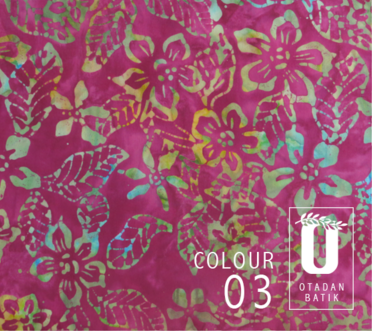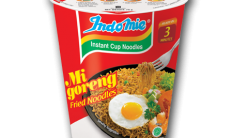Plackets
Knowing the basics of yarn, fabric and garment construction will help you cure your customers’ placket shirt woes.
Impressions Magazine
FEBRUARY 01, 2003 — Think of yourself as an apparel doctor. You may not have a medical degree, but you’re prescribing clothing cures to your customers every day. And nothing can be harder to pinpoint than the perfect placket shirt.
Before you even suggest a possible remedy, you have to know your customer’s unique needs and his budget. Then you have to match those needs with what’s available.
To help you avoid headaches of your own, make sure you understand all the possibilities—everything from 100% cotton to polyester microfibers. Doing so ensures you’ll prescribe the right products to your customer.
YARNS AND FABRIC
A veritable tidal wave of fabric innovation has set old industry logic on its ear. In the past, many suppliers defined golf shirt quality in terms similar to those used for T-shirts and sweat shirts. They pushed 100% cotton products and equated heavier weight with higher quality. In today’s golf shirt market, the truth is more complicated. Many of the industry’s better shirts are made of blended fabrics that weigh less than five ounces per square yard.
To understand today’s placket shirts, you must first know some details about yarn and fabric construction. Armed with a little background information, you can determine the quality of the products you’re buying and make informed recommendations to your customers.
Yarns are the building block of any apparel product. As such, they provide the first indicators of quality and appropriateness for a customer’s specific product needs. Both the material used in the yarn and the processing the yarn goes through before it’s knitted affect the quality of the end product.
Cotton. Most golf shirts in the decorated apparel industry are 100% cotton because of the perception that cotton is a softer, more comfortable material than cotton/polyester blends. All-cotton shirts, which can range from $5 to nearly $40, are excellent for general use, but make sure you understand the yarns that make up these products.
Cotton fabrics made of lower grade, less-processed yarns can be harsh to the touch, especially when chemical softeners, which are sometimes added during fabric processing, have faded out after washing. But high-grade cottons, such as pima cottons or those using combed, ring-spun yarns, can meet customers’ expectations for softness and performance.
For a more upscale clientele, such as corporate buyers looking for shirts to include in a company catalog, consider 100% combed, ring-spun cotton shirts. Your customers will appreciate the variety of styles available. Consumer preference for cotton isn’t likely to change anytime soon, so you shouldn’t hesitate to include cotton products in your repertoire.
Polyesters. Many new products on the market feature fabrics that can match or exceed cotton’s performance. Changes in knitting and finishing have led to polyester blends that can outperform cotton on softness and wicking, which pulls moisture away from the skin to the garment’s outer surface.
At the higher end of the price spectrum are polyester-dominant and even 100% polyester microfiber shirts. Recommend these garments to customers looking for apparel to wear when moisture management is important, such as on the golf course. These customers will likely want performance shirts designed with a wicking property. These items also would work well for customers needing corporate gifts.
Fabric. Not only should you understand the influx of new materials, you should also know the fabric composition basics, which can further help you develop product recommendations. For example, cotton/polyester blends tend to have better color retention and after-wash appearance than 100% cotton products and are more durable. Consequently, shirts made from such blends are excellent for customers on a tight budget or those looking for uniforms. Restaurants and retailers with high employee turnover are good candidates for these garments.
PROCESS MAKES PERFECT
An understanding of yarn processing is also important when making product recommendations. Many differences among cotton products result from the amount and type of processing involved in yarn spinning. As you might expect, more processing produces higher quality yarn.
When cotton is processed, the fibers are first opened and cleaned. Then they’re carded, which further removes the impurities along with short strands of fiber. Carding leaves the fibers parallel to each other, ready for spinning.
Cotton destined for higher quality products undergoes yet another process called combing, which eliminates more short fibers and aligns those that remain more precisely. This results in a softer, smoother, stronger yarn that costs somewhat more but provides a better surface for decoration.
Finally the cotton is spun. The two main methods of spinning cotton and cotton/polyester blends are ring spinning and open-end spinning (See Figure 1).
Open-end spinning takes individual fibers arranged in a less uniform manner and wraps them with crisscrossing fibers. Ring spinning, which is generally associated with higher-end garments, twists a parallel bunch of fibers without the use of wrapper fibers to hold the bunch together.
Products made with open-end yarns are usually thicker, bulkier and have a harsher hand than ring-spun products. Golf shirts made with open-end yarn are good for low-cost uniforms and other labor-intensive uses. However, you should steer customers seeking better goods toward combed, ring-spun shirts or to some of the newer fabric blends. Usually, they will find the softness worth the extra cost.
FABRIC CONSTRUCTION
Piqués. Most golf shirts sold in the decorated apparel market are made from piqué fabric because of its versatility. They look good after washing, take embroidery well and come with hundreds of collar and trim options. However, there are other knit constructions you should have in your sales mix, principally jersey and interlock (See Figure 2).
Jersey. These knits are made from the same products used to make T-shirts. They tend to be comfortable and are easy to screen print and embroider. Because many jersey golf shirts are in the lower end of the price spectrum, consider recommending them to budget-conscious customers with high employee turnover or to those who aren’t as fashion conscious. Still, many of today’s more fashionable golf shirt styles feature jersey fabrics, so don’t rule out shirts for high-end customers just because the catalog reads “jersey construction.”
Interlock. An alternative to piqués, and jersey knits, interlock products have a smooth, identical interior and exterior because they’re double-knit. This also gives them a lot of stretch. Manufacturers often choose interlock fabrics for fashion introductions because they offer designers many options for patterns and stripes.
Suggest interlock golf shirts to customers looking for corporate catalog apparel with a fashion twist. Interlock may not be a good candidate for uniform purchases, though, because the product can actually grow in size after it’s washed. Test these products before recommending them to customers.
SPECIALTY PRODUCTS
Over the past few years, the delay between a fabric’s appearance in the retail world and its transition to the imprinted sportswear market has nearly evaporated. As a result, decorators now have access to more fashion-forward fabrics, such as mercerized products and silk blends.
Mercerized garments are made from cotton yarn that has been processed in a caustic soda solution to increase its luster and affinity for dyes. Customers may recognize the fabric from visits to better golf shops and specialty retailers.
Several manufacturers are incorporating silk into their placket shirts. Silk/cotton blended shirts combine the appearance, softness and strength of silk with the comfort and easy care of cotton.
And don’t forget microfibers. Small diameter yarns give these garments a tight, soft surface and exceptional breathability.
No apparel category has experienced the explosion in styling and fabric alternatives like the golf shirt market. The past few years have seen a dizzying number of new products. Although the variety can be confusing, manufacturers have developed these offerings to give you new ways to meet your customers’ needs.
A 17-year veteran of the imprinted sportswear industry, Chuck Niedringhaus has headed brand marketing and strategic planning programs for several leading apparel manufacturers and embroidery supply companies.





